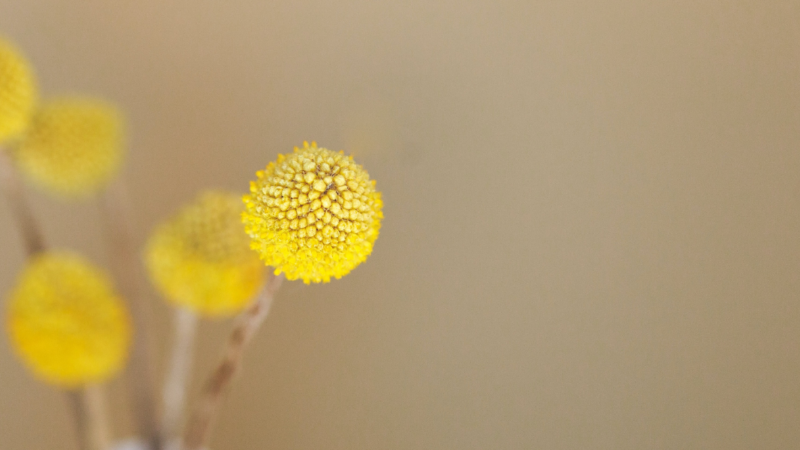How to Meditate – with Pema Chödrön
Pema Chödrön is treasured around the world for her unique ability to transmit teachings and practices that bring peace, understanding, and compassion into our lives. With How to Meditate: A Practical Guide to Making Friends with Your Mind, Pema offers her first book exploring in-depth what she considers the essentials for a lifelong practice.
More and more people are beginning to recognize a profound inner longing for authenticity, connection, and aliveness. Meditation, Pema explains, gives us a golden key to address this yearning. This step-by-step guide shows readers how to honestly meet and openly relate with the mind, embrace the fullness of our experience, and live in a wholehearted way as we discover:
Visit the How to Meditate page for more information, a free sample, and ordering instructions.
Free audio teachings from Pema Chödrön:

Into the Belly of Meditation
Into the Belly of Meditation
By Jeff Foster
You are weary, friend.
Sit.
You are thirsty.
Here. Drink.
You are hungry. Here. Take this.
A piece of bread.
A small bowl of soup.
See how God has taken form!
It is all I have but it will keep you alive.

I will light a fire that will never go out.
A sacred flame. Unconditional in its burning.
To illuminate us in the darkness.
Oh. I see you are wounded.
Bruised. Bleeding.
Exhausted from the world.
You have suffered much, I know.

Come.
Take off these dirty rags.
Don’t worry. It’s safe.
There is strength in your nakedness.
Here. Wash.
Rub this medicine onto your wounds.
Put on these robes, they are clean and dry.
Lie down. Close your eyes.
I will watch over us tonight.

Listen. You have not failed.
I see new life breaking through.
I see birth. An insurrection.
The sharp edge of hope.
I have no teaching for you.
No wise words.
I only want you to trust what you are going through.
To bring this fire inside of you.
Until the end.
I have known this pain. Yes.
This courage to keep moving. Yes.
This courage to rest, too.
The sacrifice of the known world.

Friend.
Drop into the belly of meditation now.
The place you were always seeking.
The vast silence at the Earth’s core which is your own core.
Breathing into the gut now.
The throat. The chest.
Irradiating the nervous system with unspeakable
tenderness.
Flooding the body with soft, warm light.
Drenching the human form with divine love.
And sleep.
And sleep.

I may not be here when you wake.
We may not meet again in form.
Yet I leave you with all you need.
Food. Water. A bed.
A chance to rest.
A touch of kindness.
And your unbreakable Self.
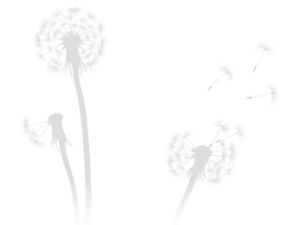
This poem is excerpted from You Were Never Broken: Poems to Save Your Life by Jeff Foster.
 Jeff Foster shares from his own awakened experience a way out of seeking fulfillment in the future and into the acceptance of “all this, here and now.” He studied astrophysics at Cambridge University. Following a period of depression and physical illness, he embarked on an intensive spiritual search that came to an end with the discovery that life itself was what he had always been seeking.
Jeff Foster shares from his own awakened experience a way out of seeking fulfillment in the future and into the acceptance of “all this, here and now.” He studied astrophysics at Cambridge University. Following a period of depression and physical illness, he embarked on an intensive spiritual search that came to an end with the discovery that life itself was what he had always been seeking.
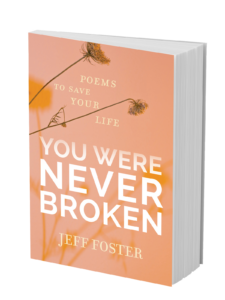
Learn More
Sounds True | Amazon | Barnes & Noble | Bookshop
Letting Go of Shame, with Rick Hanson
For many, shame is one of the most difficult emotions to work with. It is so pervasive in contemporary life, yet it is often hidden underneath layers of more “obvious” sorts of feelings and emotions like rage, sadness, anger, and despair. Sounds True author and dear friend Dr. Rick Hanson, organizer of The Compassionate Brain free online video series, has spent decades studying shame, self-worth, and self-acceptance, as a neuropsychologist and as a psychotherapist working with clients.
Additionally, Rick is the author of a number of audio learning programs, each of which offers simple guided meditations to open you to your true nature – that of a happy, content, aware, alive, and loving human being.
To help you begin to let go of the shame you may be carrying, Rick has put together the following simple, yet very effective guided exercise. We hope that you find it helpful. If you’d like to read more about Rick’s work in the area of shame and self-acceptance, you are welcome to read his article, “From Shame to Self-Worth.”
Guided Exercise – Letting Go of Shame
Imagine that you are sitting beside a powerful river on a beautiful sunny day. You feel safe and contented and strong.
Imagine that sitting with you is a wise and supportive being. Perhaps someone you know personally, perhaps a historical figure, perhaps a guardian angel, etc. Know in your heart that this is a very wise and honest and caring being.
Imagine a small boat tied to the bank of the river, there near you. Imagine an empty and open box in the boat that you can reach easily. Alright.
Now, continuing to be centered in feelings of worth and well-being, bring to mind lightly something you are ashamed of. Represent it, whatever it is, as a small object on the ground in front of you.
Imagine that the being is telling you, or that you are telling the being, some of the many causes and conditions that led to that thing you are ashamed of. You don’t need the whole story; often a few seconds in your imagination can summarize the heart of the matter.
With that summary of the causes of the shame, see if you can feel a letting go inside.
If you like, in your imagination, bow to the object representing the shame: it exists, it is what it is.
Then put the object in the box, and let it go as much as you can.
Now bring to mind, lightly, something else you are ashamed of. Represent it, whatever it is, as a small object on the ground in front of you.
I’ll be repeating the instructions, and feel free to go at your own pace, slowing down to dwell on certain parts, or speeding up to get through them to additional things you’d like to put in the boat.
[Repeat as many times as you like.]

The Remedy We Are Excited To Try in the New Year: Flower Essences
What are flower essences?
The goals of flower essence therapy include: ease in accessing higher vibratory states like joy and gratitude; enhanced mind-body-spirit balance, presence, acceptance of emotions and integration of difficult vibratory states; encouraging flow states like creativity; manifesting; supporting balance; expanding awareness of self and the Universe, ancestral connection and healing; and helping us to be of greater service to ourselves, others, and the Earth.
Flower essences work by way of the following:
- synchronicities—helping us connect seemingly unrelated or previously unseen opportunities or happenings
- indirect occurrences—positively affecting different environments and interpersonal dynamics
- insights—supporting mental, emotional, physical, and/or astral awakening; new ideas, solutions, or information may present
- physical changes—bringing up new sensations, shifts in organ/system functioning or in symptoms
- emotional responses—bringing up new feelings or memories; stabilizing or releasing them
- expression—inspiring artistic, verbal, and kinesthetic expression
- dreamtime—bringing about new or recurring dreams, insights, and subconscious resolution
- invoking intention—the more time and space you can offer, the more likely you’ll be able to feel flower essences. For example, taking them with a light meditation, a visualization, while doing yoga or some other kind of bodywork or prayer
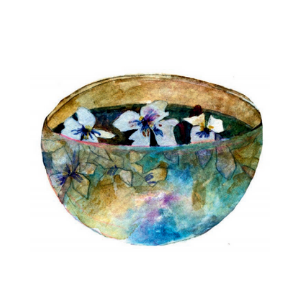
How to Select a Flower Essence
Flower essences can be purchased from a quality producer, or you can make your own. Here, I will discuss how to select and apply ready-made flower essence remedies. You can learn how to wildcraft your own flower essences with me in this video.
When you’re starting out with flower essences, it can be overwhelming—so many producers and so many essences! I like to encourage people to remember that it’s your relationship with the plant that is the most important thing in selection. Your relationship with the remedy is the co-creation with that plant. The more you work with flowers, the more you will be able to feel and trust this part of the process.
The following are some ways to begin exploring flower essences:
- Depending on what issue(s) you’d like to address, begin by taking one to three essences that resonate with you. Many producers offer sets of remedies that have a particular focus. You may want to purchase a set to experiment with, such as the FES’s Range of Light, Delta Gardens’ Protection Set, Alaskan Essences, or the Bach Essences.
- Consider flower essences that invite presence, relaxation, protection, and grounding.
- If you want to study the essences more carefully, consider making flashcards or purchasing the flower cards (Alaskan Essences, FES, and Bach make sets).
- If you’re curious to learn more about how a plant might connect with your ancestry, consider doing some research on how it was used historically.
- Perhaps there’s a flower you’re curious about, or have seen in nature. Ask this plant if it would like to work with you.
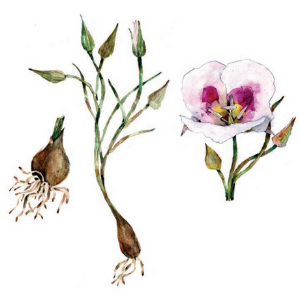
Here are five basic ways to select a flower essence:
- Intuitively: A flower essence might come to you by way of revealing itself in nature, or appearing in a dream.
- By dowsing: Using a tool of resonance, such a pendulum, to test for essences.
- Through muscle testing: A simple way to muscle test is to make a ring with the index finger and thumb of your nondominant hand. If you would like to test for a yes for an essence, say the name of the plant and flick the circle with your dominant hand. If the circle holds, that’s a yes. If it breaks open, that is a no.
- By consulting reference literature: Books, repertories, or flower affirmation cards.
- Through blind testing: By drawing a card or randomly selecting an essence from a set. This method works well with children.
Any of these methods can be integrated into your ritual. Before making remedies for other people, it’s a good idea to spend some time with the flower essences yourself. The flowers will have much to share with you. Also, the more experience you have with the essences yourself, the better you will understand how the essences will work for others.
This is an excerpt from The Bloom Book: A Flower Essence Guide to Cosmic Balance by Heidi Smith.
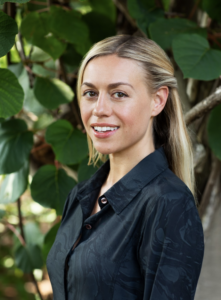 Heidi Smith, MA, RH (AHG), is a psychosomatic therapist, registered herbalist, and flower essence practitioner. Within her private practice, Moon & Bloom, Heidi works collaboratively with her clients to empower greater balance, actualization, and soul-level healing within themselves. She is passionate about engaging both the spiritual and scientific dimensions of the plant kingdom, and sees plant medicine and ritual as radical ways to promote individual, collective, and planetary healing. She lives in Brooklyn, New York, with her partner and two cats. For more, visit moonandbloom.com.
Heidi Smith, MA, RH (AHG), is a psychosomatic therapist, registered herbalist, and flower essence practitioner. Within her private practice, Moon & Bloom, Heidi works collaboratively with her clients to empower greater balance, actualization, and soul-level healing within themselves. She is passionate about engaging both the spiritual and scientific dimensions of the plant kingdom, and sees plant medicine and ritual as radical ways to promote individual, collective, and planetary healing. She lives in Brooklyn, New York, with her partner and two cats. For more, visit moonandbloom.com.
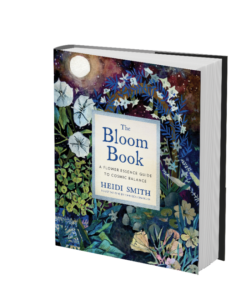
Learn More
Sounds True | Amazon | Barnes & Noble | Bookshop
Do One Thing More Consciously, with Caroline Myss
Does transformation have to be a complete life makeover? Do you have to radically alter everything you do in the search for authentic spirituality? Caroline Myss says that the opposite is true.
In this short teaching, Caroline offers a way that you can take just one minute to make a profound change in your life—and deepen your connection to an essential part of who you are.
Tapping 101: Calm Yourself Instantly


Tapping is a technique in which you use your fingers to tap on meridian points in order to relieve stress. We intuitively know, for example, that the key meridian points near the eyebrows, nose, temple, and chest can comfort us, which is why we often unconsciously touch these areas when we are under stress. Tapping lets us access these points in a conscious and deliberate way.
Before you begin, choose an emotional focus you would like to clear from your mind. Then frame it as a phrase, such as, “I am stressed out.” Now insert that phrase into a sentence that ends with “I love and accept myself,” like this, “Even though I am stressed out, I love and accept myself.”
Looking for more great reads?
Excerpted from Kicking Sick by Amy Kurtz.

Amy Kurtz is a wellness expert, an AADP-certified Holistic Health Coach, speaker, and a regular contributor on popular wellness websites such as mindbodygreen and Yoganonymous. She lives in New York City. For more information, visit amykurtz.com.


